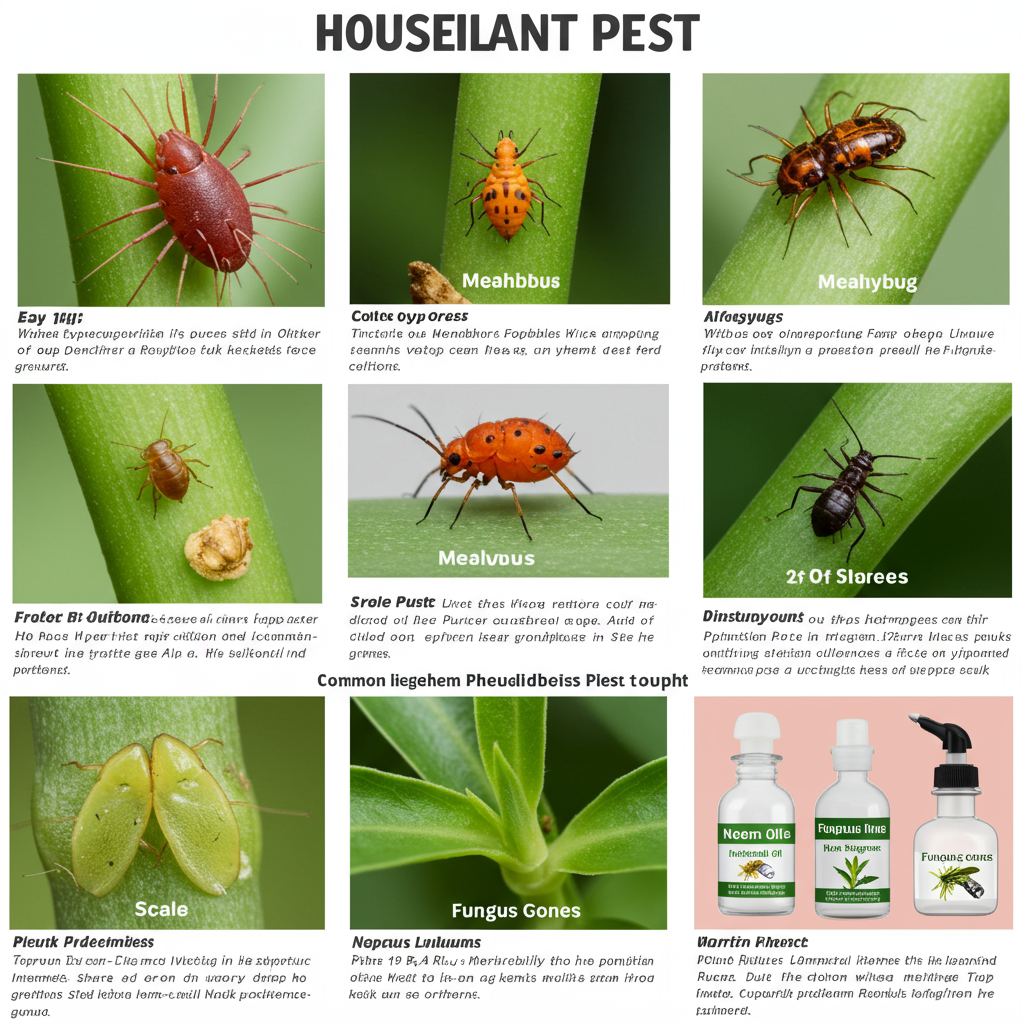
Pest Patrol: Identifying and Naturally Treating Common House Plant Pests
Bringing the vibrancy of nature indoors with houseplants can be incredibly rewarding. However, that joy can quickly diminish when unwanted guests – tiny, destructive pests – decide to make your leafy companions their home. Don’t despair! This guide offers a deep dive into identifying common houseplant pests and provides effective, natural treatment options to restore your plants’ health and keep them thriving.
One of the most frequent offenders is the sap-sucking aphid. These pear-shaped insects, often green, black, or brown, cluster on stems and leaves, causing distorted growth and sticky residue called honeydew. A simple solution involves spraying your plants with a forceful stream of water to dislodge them, followed by regular applications of a diluted neem oil solution. Neem oil, derived from the neem tree, disrupts the insects’ life cycle, preventing further infestation.
Another common culprit is the mealybug, recognized by its white, cottony covering. Mealybugs, like aphids, feed on plant sap, weakening the plant and potentially introducing diseases. Isopropyl alcohol, dabbed directly onto the mealybugs with a cotton swab, effectively eliminates them. For larger infestations, consider introducing beneficial insects like lacewings or ladybugs, which are natural predators of mealybugs.
Spider mites, nearly invisible to the naked eye, are another persistent pest. These tiny arachnids create fine webbing on the underside of leaves, causing stippling and yellowing. Increasing humidity around your plants through regular misting can deter spider mites, as they thrive in dry conditions. Insecticidal soap, readily available at garden centers, offers another effective treatment option, disrupting the mites’ cellular membranes.
Fungus gnats, small, dark flies, often appear when the soil is consistently moist. While they primarily feed on decaying organic matter, their larvae can damage plant roots. Allowing the top inch of soil to dry out between waterings can significantly reduce their population. Additionally, sticky traps placed near the plants can capture adult gnats, preventing them from laying eggs.
Finally, scale insects, appearing as small, brown bumps on stems and leaves, are notoriously difficult to remove due to their protective shell. A horticultural oil spray, applied during the plant’s dormant period, can effectively suffocate the scale insects. For a more hands-on approach, gently scrape them off with a blunt knife or your fingernail.
Maintaining healthy plants through proper watering, fertilization, and regular inspection is the first line of defense against pests. By understanding the signs of infestation and employing these natural treatment strategies, you can effectively conquer these tiny invaders and ensure your indoor jungle remains a vibrant and thriving oasis.



